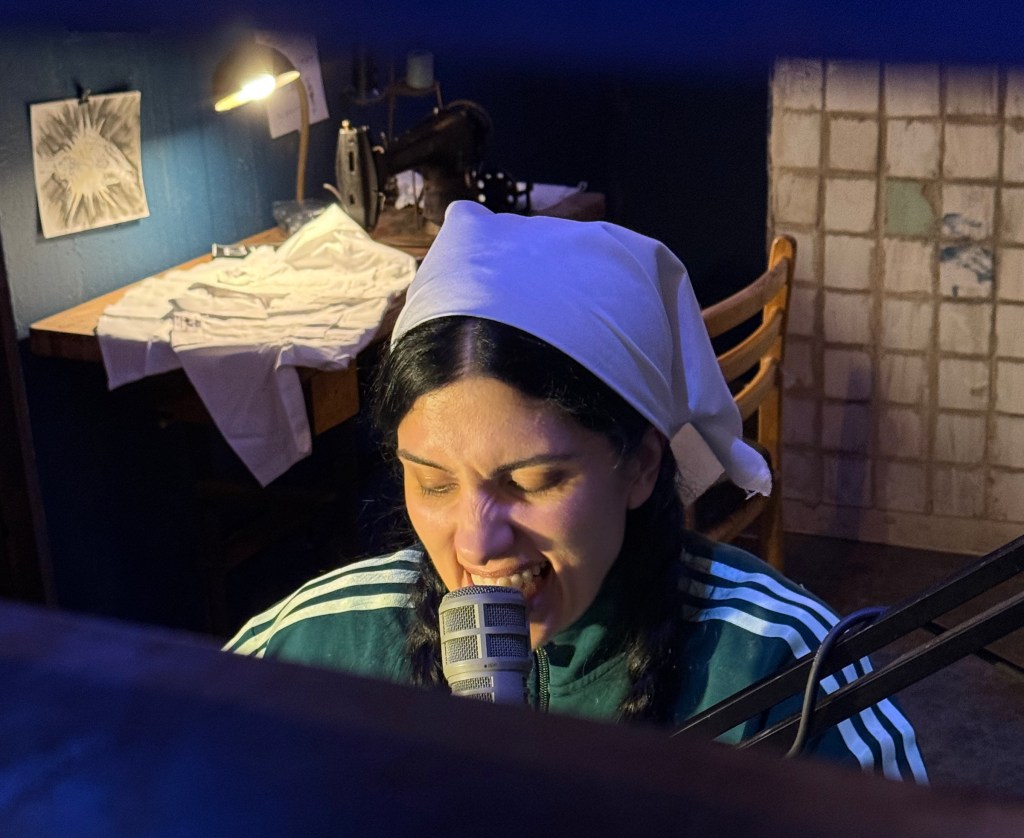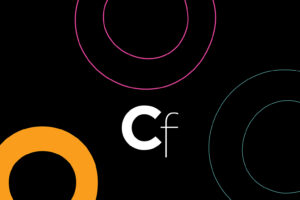Nadya Tolokonnikova Builds a Prison of Her Own


LOS ANGELES — Police State, a 10-day durational performance by activist, artist, and Pussy Riot creator Nadya Tolokonnikova, transforms the cavernous warehouse of the Geffen Contemporary at the Museum of Contemporary Art, Los Angeles into a site of carceral confinement and government surveillance.
Since last Thursday, June 5, Tolokonnikova has occupied a recreation of a drab, Russian prison cell during the museum’s open hours, and will continue to do so through this Saturday, June 14. Through small peepholes in the corrugated metal structure, the public can watch as she creates soundscapes that echo through the space, remixing various sources including recordings from actual prisons, a live LA Police scanner feed, and her own heartbeat, filtered through a heart-monitor synth fabricated by collaborator Riley Bray.
Tolokonnikova spent nearly two years in a Russian prison after being convicted of “hooliganism motivated by religious hatred” for Pussy Riot’s 2012 anti-Putin performance “Punk Prayer,” which took place in Moscow’s Cathedral of Christ the Saviour. She was shuffled between roughly a dozen prisons and went on a hunger strike before being released in December 2013. She based the design for the cell at MOCA, which includes a bed, toilet, and sewing machine, on her own experience of incarceration, as well as accounts from other prisoners, calling it a “platonic ideal” of a prison cell. The walls of the cell are covered with artwork by nearly 30 current and former political prisoners she invited to contribute to the show, including Anna Bazhutova, Polina Yevtushenko, Zhenya Makarenko, and Oleg Navalny.

After Tolokonnikova burned a portrait of Vladimir Putin as part of “Putin’s Ashes,” a 2023 installation at Jeffrey Deitch Gallery in Los Angeles, she was placed on Russia’s list of most wanted criminals. “I constantly think about prison — it’s not something that’s in my distant past,” she said. “I have numerous criminal cases against me, my travels are restricted. My life is quite literally in very real danger.”
At MOCA, the cell is placed in the center of the warehouse, as a replica guard tower stands watch, its glowing top bearing text reading “Big Smile for the Camera / It’s Always On” and “No Problems in Paradise / We’ll Lock Them Up.” Video plays on two monitors: one featuring video taken inside Russian prisons, another streaming footage from four security cameras placed inside the cell.
“I want people to feel like they’re very viscerally inside of a prison,” Tolokonnikova told Hyperallergic shortly before the exhibition opened. “I want the audience to be taking on the role of a prison guard in a way, to disturb them. Why not? That’s what art does.”

On one side of the cell, gumball machines filled with colorful balls bear the names of poisons commonly used by the Russian government to silence critics, including Russian opposition activist Alexei Navalny, a friend and mentor to Tolokonnikova, who died in prison last year while serving a 19-year sentence. The machines are flanked by two of her “icon” paintings, which combine Cyrillic calligraphy with stylized depictions of female faces, sometimes wearing Pussy Riot’s signature balaclavas. Banners bearing the slogan “Punk’s Not Dead” — the title of a recent two-part exhibition at Honor Fraser Gallery — flutter in front of fans.
As visitors enter the space, they encounter a large, glowing Russian Orthodox Cross hanging from the ceiling in front of a bank of church pews, providing an uplifting, spiritual element. “This is a site of both confinement and liberation,” MOCA associate curator Alex Sloane told Hyperallergic. “The cell is also a sanctuary.” This duality is echoed in the soundscapes, ranging from aggressive noise to rumbling, ambient dirges, and Russian lullabies, which Tolokonnikova plays live on a toy piano.
Although rooted in her own experience in Russia, Tolokonnikova stressed that the work is focused on a “global perspective” on incarceration and autocracy. “This police state is something that’s engulfing the entire world,” she said. Even so, the quickly escalating repressions in the United States literally arrived at the museum’s doorstep last Friday, as Immigration and Customs Enforcement agents descended on LA and began immigration sweeps. In response, protestors converged on the Metropolitan Detention Center and Royal Federal Building a block from the museum, where many detainees had been taken. On Friday night, Tolokonnikova posted a picture of herself to Instagram outside the museum in front of a row of LAPD officers, writing “ok. i came out of 9 hours in the cell at @moca and saw the riot police, helicopters and people chanting ‘FREE THEM ALL’. where do i sign up.”

On Sunday, as the National Guard arrived in LA, MOCA decided to close the Geffen Contemporary location early “out of an abundance of caution and for the safety and well-being of our staff and visitors.” Tolokonnikova chose to remain in the empty museum and continue her performance, mixing in audio of the protests just outside the walls. “Durational performance is a scary thing to step into: Once you say you’re going to show up, you can’t just leave simply because the National Guard has a whim to occupy the city, so my choice was to stay and continue doing my job as an artist,” she told Hyperallergic.
Since Pussy Riot’s first performance, Tolokonnikova’s practice has deftly merged art and activism, media and mayhem, challenging corruption, exposing injustice, and railing against oppressive power structures with an incendiary but finely tuned message. As her profile in the art world rises, she finds herself in institutional settings that ostensibly support progressive policies but sometimes suppress dissent, not to mention “riots,” in the name of order. Can her abrasive, radical ethos coexist within the relative comfort and safety of the museum? “When you have a coup happening in front of your eyes in your country, an autocratic takeover of power, I don’t think it’s really time to think about safe spaces,” she said. “It’s time to try to save your ass, and save the freedoms that you still have.”









